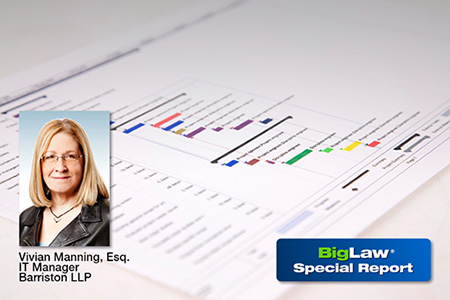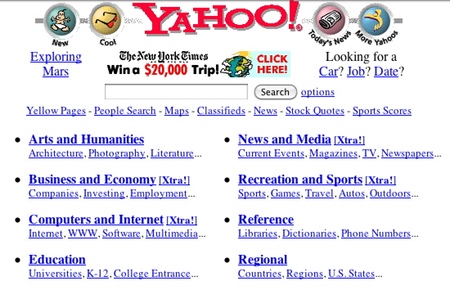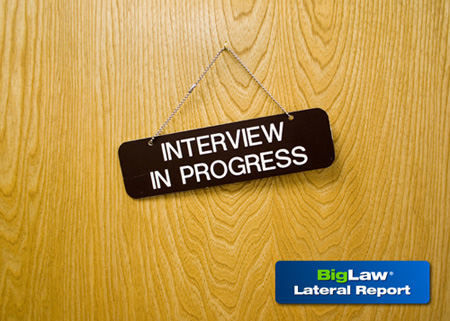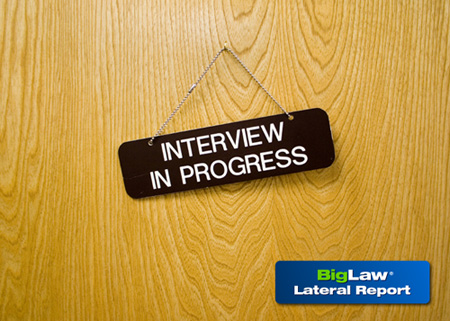Originally published on January 17, 2012 in our free BigLaw newsletter. Instead of reading BigLaw here after the fact, sign up now to receive future issues in realtime.
Many people know Jeff Richardson as the award-winning blogger behind iPhone J.D, a web site for attorneys who use the iPhone and iPad. However, few people realize he's a partner at an AmLaw 200 firm. We asked Jeff if he'd like to write a monthly column specifically for those in midsize and large firms. In today's issue of BigLaw, Jeff kicks off his new beat by tackling a question on the minds of many managing partners — should you buy an iPad for every lawyer in your firm, or at least support attorney-purchased iPads? Jeff's advice may surprise you. Also, don't miss the BigLaw Pick of the Week (subscribers only) for a look inside a large firm spinoff that abandoned the billable hour among other time-honored traditions.
SHOULD LARGE LAW FIRMS BUY AND SUPPORT IPADS?

Some large law firms have received publicity for buying iPads for all of their attorneys. For example, as I reported on iPhone J.D. last year, Bassford Remele, a litigation law firm in Minneapolis, gave iPads to each of its 50 attorneys. Similarly, as reported here in BigLaw, Proskauer Rose made iPads available to its 700 lawyers. The list goes on — Holland & Knight gave iPads to all of its associates, while Patterson Belknap Webb & Tyler gave its associates a $675 Apple gift card to cover the cost of an iPad. Should your law firm join this trend?
iPads Are Incredibly Useful Tools for Lawyers
iPad-related announcements generate buzz because the iPad is hottest gadget for lawyers today. For example, members of the International Legal Technology Association (ILTA) recently named the tablet the most exciting technology or trend in law firms today. And for now at least, "tablet" essentially means iPad. According to a survey conducted by the ABA Legal Technology Resource Center in early 2011, 90% of attorneys who use a tablet use an iPad. Just because the iPad is buzzworthy doesn't mean it is a mere passing fad. In fact, according to at least one analyst, it potentially represents an inflection point in computer history.
Instead of carrying multiple, heavy binders to court with pleadings and cases, you can carry a thin and light iPad with every document saved as a searchable PDF file organized into folders using an app such as GoodReader (the best $4.99 that any attorney can spend on an app). It's easy and unobtrusive to carry that iPad to the podium or to the bench, an advantage over a laptop.
Similarly, an iPad is often more than sufficient for business travel because it can handle email (using the built-in Mail app), simple document editing (using a third party app such as the $9.99 Documents to Go app), and web access (using the built-in Safari app).
Admittedly, some tasks still require a computer such as a PC-only program for which there is not yet an iPad equivalent (e.g., some document management systems, client relationship management systems, sophisticated redlining software, etc.). However, even in these circumstances you can often use a remote access app on the iPad such as the free Citrix Receiver app or the free LogMeIn app). Indeed, any attorney with an iPad will probably want to take the iPad when traveling anyway, even if just for entertainment purposes such as reading an ebook, browsing a magazine, watching a movie, or conducting a videochat with a spouse and/or children.
Thus, the question is not whether to take an iPad or a laptop, but instead whether the extra cost, inconvenience, and weight of a laptop is worth it when the iPad will be along for the trip anyway.
Deciding Whether to Pay for iPads
Of course, just because a tool is useful doesn't mean that law firms need to pay for it. All large law firms pay for their attorneys' computers, which deprives your lawyers of choice, except perhaps for laptop versus desktop. Also, law firms typically don't allow the installation of unauthorized software such as games on firm-owned equipment.
As useful as an iPad is for work, it is also a personal device with undeniable entertainment value. Any attorney using an iPad will have a personal iTunes App Store account, making it easy to install third party apps. The iPad may have the ability to replace a laptop computer, but its personal nature it makes it similar to a smartphone.
One possibility is for your firm to let attorneys choose between a firm-purchased laptop, or a firm-purchased desktop plus a firm-purchased iPad. After all, a business-class laptop running Windows 7 costs about $1,500, while a similarly-configured desktop PC costs well under $1,000, a difference sufficient to pay for an iPad.
The problem with this strategy is that almost every attorney will experience situations in which they need a laptop when on the road or even just at home over the weekend. Remote access apps like Citrix and LogMeIn are powerful, but sometimes you need a larger screen and mouse to accomplish certain tasks. Indeed, new computer purchasing decisions often occur in the context of new associates who lack the experience to understand what they are giving up by not opting for a laptop.
Our Firm's (Current) iPad Policy
Admittedly, I have a clear bias here. As a New Orleans attorney who lived through Hurricane Katrina, and a member of a law firm with offices along the Gulf Coast, I place a strong emphasis on the ability of our lawyers to pick up their computer and continue being productive in another location with little prior notice.
But many large firms don't have as high a risk profile as ours, at least regarding natural disasters. If you already use desktop computers — perhaps because everyone uses a centrally-managed desktop environment such as one offered by Citrix — then the desktop plus iPad option may make more sense for you.
One size fits all doesn't work for solo practices let alone large, complex organizations like ours. Thus, I can't make a single recommendation as to whether we should all follow Proskauer Rose. Circumstances and firm cultures vary too much. The decisions that your firm has made regarding smartphones may offer the best model for your approach to iPads. Do you pay for devices, just pay monthly data and/or voice fees, etc.?
In my own firm (of about 300 attorneys), we have not purchased iPads for every attorney. We have not felt a need to do so because so many of them have already purchased one on their own, which eliminates problems with attorneys putting personal data on firm-owned equipment, and has the advantage of letting each attorney decide which model they want. For example, the main justification for a 64 GB or even 32 GB iPad is to store lots of personal movies, photographs, and graphics-intensive games. As for connectivity, some lawyers may want an iPad with AT&T or Verizon service whereas others may need only WiFi.
More Importantly, Embrace and Support iPads
While I don't have a one-size-fits-all policy on buying iPads, I do have one specific recommendation for every large law firm — actively support iPad use. Make at least one member of your IT staff an iPad professional with the ability to help new iPad owners get connected to email, contacts, and calendars. This person should also be ready to recommend and help troubleshoot problems with iPad apps.
Additionally, consider having this person (or an "expert attorney" in your firm) hold training sessions on how to effectively use in iPad in law practice. To this end, in next month's BigLaw column, I'll recommend the iPad apps that large law firms should support and encourage their lawyers to use.
iPads are already amazingly useful in the practice of law. By actively supporting iPad use, you can encourage and assist your attorneys with making the most of the iPad.
How to Receive BigLaw
Given the fragmentation in the legal industry, the world's largest law firms have achieved unprecedented success for which they don't receive enough credit. Given the size of the global economy, these firms still have tremendous growth potential. Written by large firm insiders, corporate counsel, and other industry experts, this newsletter unearths best practices in leadership, marketing, strategy, and technology to help large law firms (and midsize firms with growth aspirations) succeed on an even grander scale. The BigLaw newsletter is free so don't miss the next issue. Please subscribe now.


















